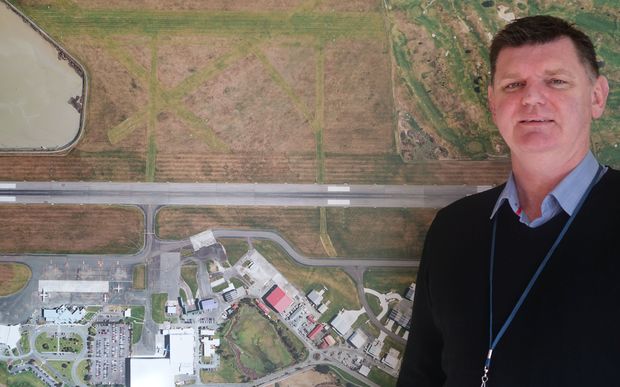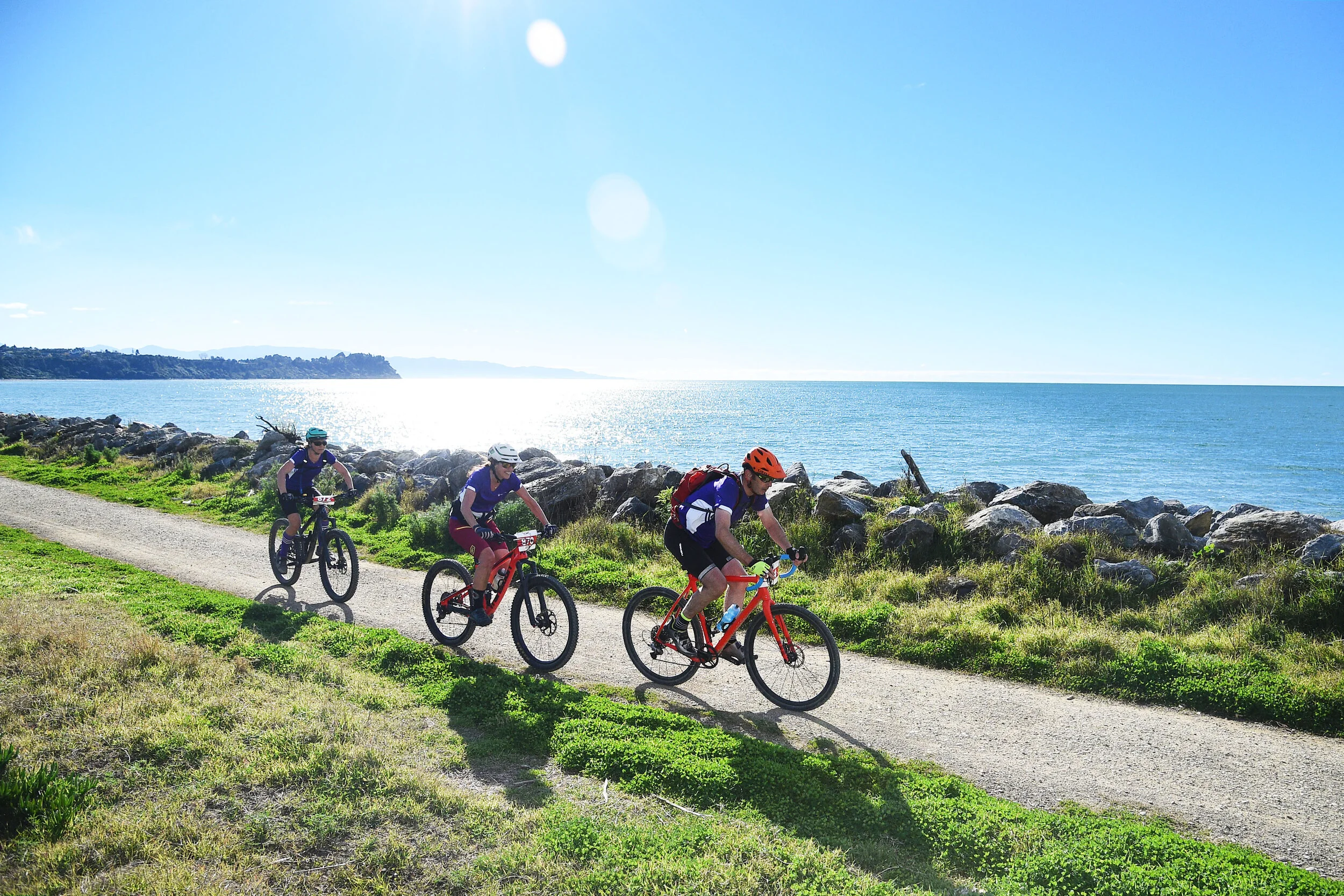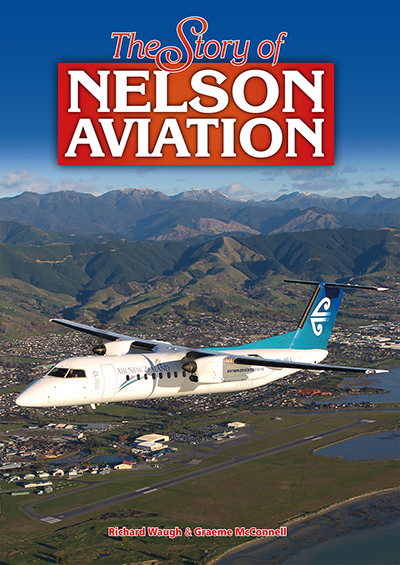The track circumnavigates the airport perimeter, which is approximately 5.75km. The scenic loop is popular for walkers and joggers, with great views of the hills behind the city, Tasman Bay, Rabbit Island and Monaco. The track affords great locations for aviation enthusiasts.
New Nelson Airport opens to the public
Three new airlines eye Nelson Airport
Enabling economic growth in the Nelson region is as important as earnings according to Nelson airport's new boss
Rob Evans, who has a history in airport management in New Zealand and Australia, predicts the airport will need to double in size over the next thirty years to accommodate expected growth.

An immediate challenge however is the possibility of housing three new regional airlines over and above the three existing carriers.
Originair in Nelson and Kiwi Regional Airlines in Hamilton have confirmed plans to operate flights to and from Nelson. And Jetstar has included Nelson on its shortlist for a new, but yet to be confirmed, regional service.
Nelson is currently served by Air New Zealand Link, Soundsair and Air2There which all operate scheduled commuter flights.
Mr Evans said increased aircraft movements translated to increased revenue for the company - a council-controlled and owned organisation.
But the biggest impact, he said, was on the community through increased options and more competitive air travel prices.
"We're not here to decide who should fly in or not, we're here to enable others to do business."
Mr Evans believed there was enough room in the market for an additional three carriers.
"It's about operating at a price point where the consumer gets a choice and when that happens that will stimulate more movements, and that will open up more opportunities for people to do business here. It [increased service] has a whole range of benefits that go well beyond the airport company.
"There are a lot of other vibrant economies in this region, including education which provide a good business case for airlines to fill aeroplanes."
The airport terminal currently sees more than 800,000 passengers a year through its doors, who board an average 60 commercial flights a day. Almost half are travelling for business.
Plans are being drafted for a terminal expansion and the airport company has appointed Wellington firms Studio Pacific Architects and Impact Project Management to the redevelopment project.
The airport precinct houses 35 aeronautical and support businesses, but a clear plan is needed to steer growth in a less ad hoc manner, Mr Evans said.
"We need to establish a really clear and strongly articulated master plan which protects our aeronautical business, but also the commercial and property real estate side of the business," he said.
The company has regularly posted strong earnings resulting in dividends returned to its shareholders, and ultimately the region's rate payers.
Mr Evans said the board is aiming for $3 million annual earnings before deductions in the next year - a $300,000 increase on the past four years.
Jet capacity might need to be considered if the region was to become a bigger hub on the main trunk routes, but Nelson would never be an international terminal, Mr Evans said.
"Absolutely not. New Zealand has more than enough international airports and we're not big enough to have a direct international connection, but runway extension is not out of the question. Expansion brings layer upon layer of cost and compliance and it's not as simple as people think."
He said Air New Zealand was looking at options for introducing a 90-seat turboprop aircraft to its fleet in next 10 years and that could make a big difference to Nelson airport.
Photo: Supplied - Rob Evans
Nelson Airport appoints Wellington 'leaning tower' architects for redevelopment - Nelson Mail
Nelson Airport has appointed Studio Pacific Architects to its redevelopment project - the same firm that came up with a leaning tower design for the control tower at Wellington International Airport.
The airport company announced last year that it had begun a review of its facilities and was looking to expand its terminal.
Now it has appointed Wellington-based firms Studio Pacific Architects and Impact Project Management to the redevelopment project.
The public will have to wait and see what design they come up with.
Studio Pacific Architecture's design for Airways New Zealand's new control tower at Wellington International Airport has been publicly released and planning consent is being sought for the the building that appears to be leaning into Wellington's prevailing northerly wind.
Nelson Airport chief executive Rob Evans, who was appointed to the job last December, said there was nothing in its brief about coming up with an iconic design and the first three months would be assessing the current terminal, then it would be a case of looking at aspirational needs and what it could afford.
"The architects have done some extremely iconic and creative structures but it has also done flexible and affordable architectural designs. We are looking to retain a bit of local feel and we would like to open the view across to Golden Bay."
A prime factor would be the cost. "What we build will be what we can afford," he said.
He said the project design brief would take into account customer feedback from research undertaken late last year and the airport management team's strategic planning.
The redevelopment comes as Air New Zealand expands its engineering maintenance at Nelson Airport, and the new Kiwi Regional Airlines plans to make Nelson its hub.
"We are developing for future growth at the airport," said Evans. "Air New Zealand's recent and welcome announcement of its Regional Maintenance subsidiary in Nelson is another key platform for growth, and we are also working closely with Kiwi Regional Airlines to ensure the required facilities are available for a successful start for its business."
He describes Nelson as one of New Zealand's most important regional aviation hubs.
However, the airport company has stopped describing itself as ``the fourth busiest commercial airport in New Zealand". It has deleted from its website the claim: ``This is New Zealand's fourth busiest commercial airport, serving over 800,000 passengers per year".
Evans said the claim was ambiguous, did not mean a lot, and confused people.
Nelson and Invercargill are the only airports without passenger numbers listed on Wikipedia's list of the busiest airports in New Zealand. It lists Nelson Airport as sixth busiest last year.
Evans said Air New Zealand had stopped providing data on passenger numbers last year so it did not have correct numbers, but would resume supplying figures from next month.
The airport company's analysis estimated the arrival and departure of 760,000 passengers last year and forecast to reach 1.1 million during the next 20 years. It is forecasting 35,000 commercial aircraft movements this year, with that number expected to reach about 39,000 in 2034.
"We are committed to listening to community ideas and concerns and we will be working to provide ways for people to become more informed about and involved in airport activities, projects and achievements during the coming months," said Evans.
LAURA BASHAM
Nelson Airport Eyes Big Growth - Nelson Mail
[divider scroll_text=""]
Big things for the small Nelson Airport complex are in the works as new chief executive Rob Evans gets comfortable in his new role.
"It's the best job in aviation in New Zealand," said Evans.
"There is a great opportunity for growth not just for the airport but for the region."
Evans, who started his role as new chief executive last week, said the airport was currently well run but was getting dated.
"We've got constrained, particularly in peak times and it's tired. It needs increased space to meet the growing demand," he said.
This demand was coming from many channels. An increase in tourists visiting the region had contributed and steady business from Auckland was another factor, said Evans.
"Auckland is a real growth opportunity. It's the gateway to New Zealand from a tourism perspective, more flights to Auckland is a big opportunity," he said.
About nine flights come each way between Nelson and Auckland daily. Evans said there was also potential for Christchurch and Queenstown airport links to grow the market.
He intends to strengthen these links by working closely with Nelson Tasman Tourism and other New Zealand airports to gain as much exposure for the region and Nelson Airport as possible.
Redevelopments are also in the works, including expanding parking facilities and bringing new businesses to the complex.
The building complies with current earthquake standards, but Evans will assess whether to restrengthen or rebuild parts of the complex.
"We are going to look at the options in the next few months. It will come down to meeting the demands of the growth in customers," said Evans.
His past experiences were a contributing factor to his appointment of chief executive. He worked at Cairns Airport for seven years where he played a part in organising its expansion to cater to growing demand.
He also worked for Mackay Airport in Queensland, a smaller airport not unlike Nelson's.
"It is similar in that it is quite isolated and reliant on air access," he said.
His experiences in Australia will be beneficial in his work to redevelop Nelson Airport, he said. He has learnt engagement with community and consulting local boards was the most efficient way to approach a redevelopment.
"I can use my past experiences in terms of how we deliver [proposals and redevelopments]," he said.
Bringing in informative displays for customers to learn more about the region is also on the list, and timely as the airport celebrated 75 years in 2013. "There is a whole opportunity to present [the region's] aviation history. I've seen some really good examples of it," he said.
"In terms of redevelopment plans [the history] is something to recognise."
Evans said Nelson Airport was well ahead of every other regional airport in New Zealand. "The passenger numbers alone show this. It punches well above its weight, it's arguably one of the best regional airports in the South Pacific."
JESS PULLAR
10,000 Enjoy Open Day
The Community Fun Day held on 30 November 2013 at Nelson Airport was a great success, attracting a crowd of close to 10,000. The people started pouring in at 9.30 am, half an hour before the opening time and continued right throughout the day. The formal proceedings started at 11 am and included a traditional Maori welcome, speeches and the cutting of the cake which was designed and custom made for the occasion. Helping Kaye McNabb, CEO of Nelson Airport Ltd, cut the cake was June Spencer who, as a child in 1938, attended the Airport Opening. This was followed by a performance by the Whatukura Kapa Haka Group. During the day the crowd were entertained by the Royal New Zealand Air Force Band and also demonstrations by the Rebecca Bignall Academy of Dance. TV One's beloved weatherman and avid aviator, Jim Hickey, kept the children busy with photo opportunities and give-aways.
Displays were provided by local aviation related businesses, the Royal New Zealand Air Force, Nelson-Marlborough Rescue Helicopter, the Red Cross, ATC and many others. These were well received by the public with the feedback being very positive. A total of 18 aircraft including both planes and helicopters were on display so people could get up close and personal. Some were even available to sit in so people could experience the feeling of being at the controls and maybe even dream of one day flying themselves.
The Southern DC3 offered flights over Nelson which was a very popular attraction, this being the last time it will be flying passengers at this type of event before being put into retirement at the Ashburton Aviation Museum in January next year. Also on display was the World War II Avro Anson which was lovingly restored locally over a period of 10 years and believed to be the only Avro Anson certified airworthy in the world.
The day drew to a close at 4 pm and as the hangar emptied it was obvious to all the people involved that the day had been a huge success. Our thanks and best wishes go out to the people of Nelson for their support on this very special occasion.
New Nelson Aviation Book - Sponsored by Nelson Airport Ltd
‘The Story of Nelson Aviation’ by Richard Waugh and Graeme McConnell, launched at Nelson Airport’s 75th anniversary, is the most comprehensive regional aviation history yet published in New Zealand and the largest book on any topic about Nelson. A4 size with 336 pages and illustrated by over 500 photographs and illustrations, this book tells the story of Nelson aviation - its aircraft, personalities, innovations and events - and how it helped develop the whole sunny province. Aviation’s influence on Nelson has been profound. With challenging road access, no rail link and the barrier of Cook Strait, Nelson had a reputation as a ‘sleepy hollow’. It was isolated and in some ways still is, yet has never been the same since the first aircraft visit in 1921. After aero club beginnings, a pioneering scheduled airline was established at Stoke in 1935.
The opening of Nelson’s new airport in 1938 – 75 years ago - was a key milestone for the region’s social, economic and tourism future. The airport led to a wartime air force station and a growing post-war airline scene. It became the main commercial aviation centre for the upper South Island, including helicopter work and is today the fourth busiest airport for scheduled flights in New Zealand.
Available in attractive soft cover with side flaps and embossed title for $74.90 or collectors hard cover for $89.90. Order from www.nzairlineresarch.co.nz or sales@craigprint.co.nz















